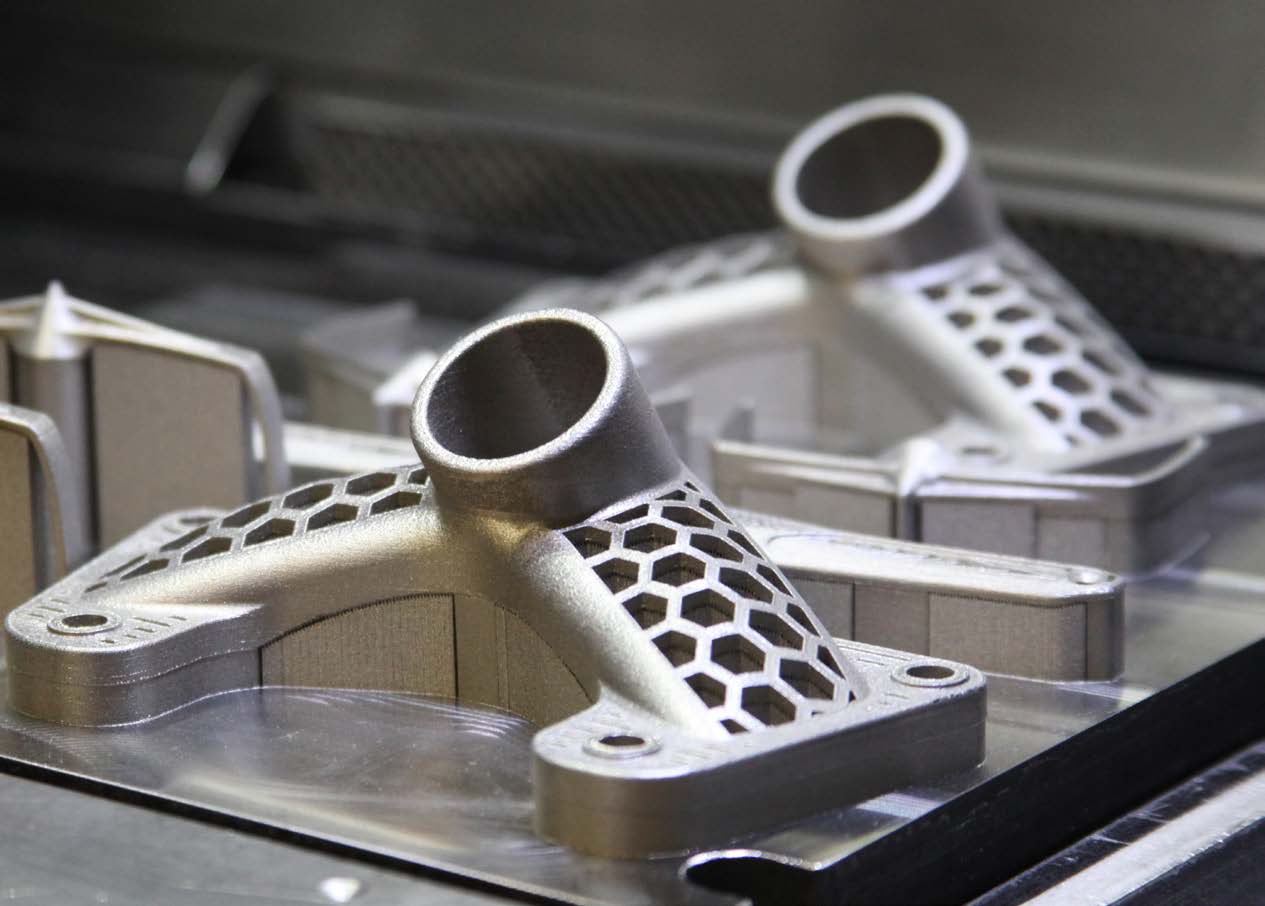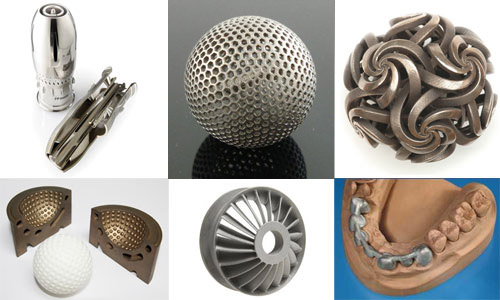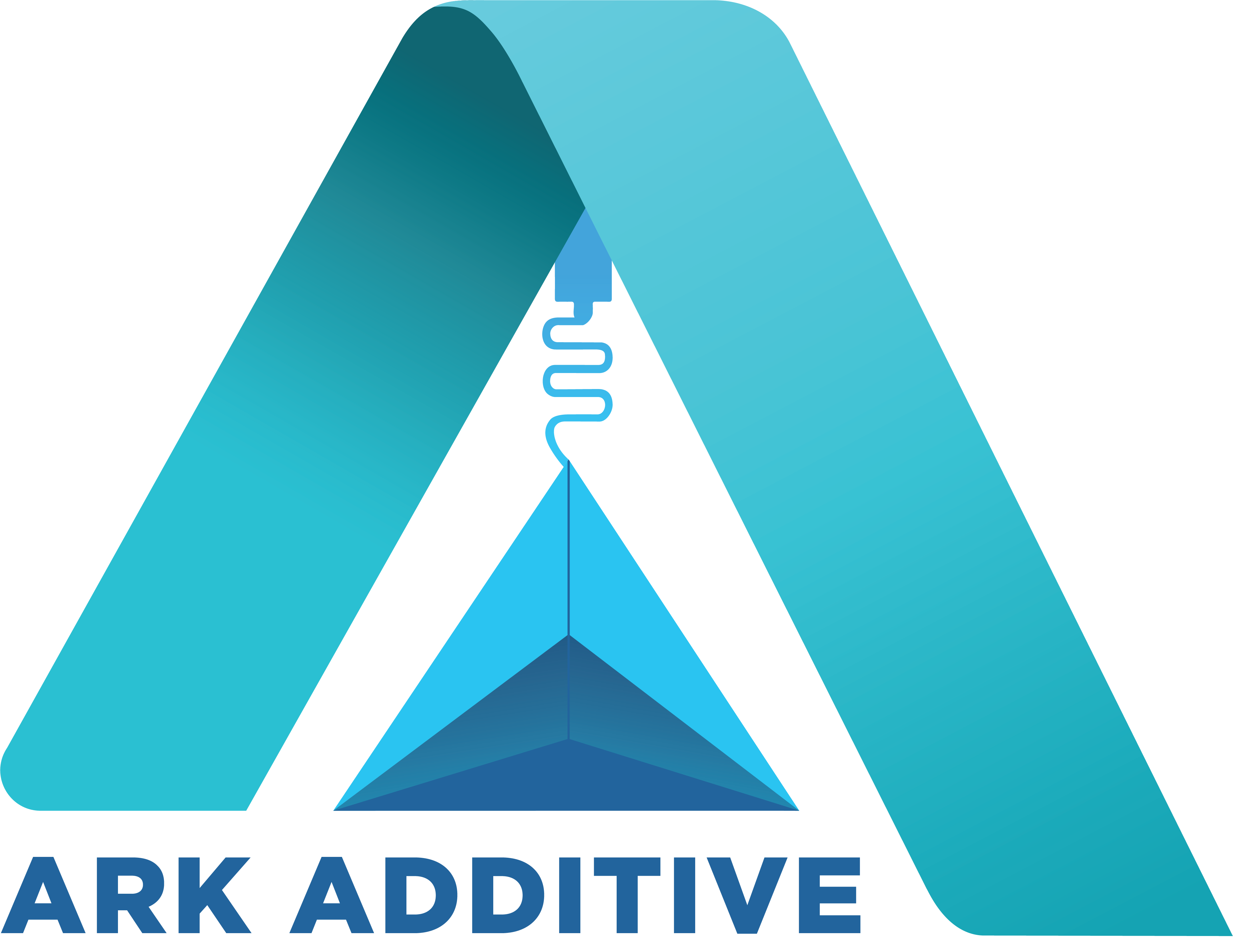Power Bed Fusion - Metal
Powder Bed Fusion (PBF) 3D printing technology spawns products with precision. This 3D printing technique enables the manufacturing of a vast array of geometrically complex products using a heat source, mainly laser or electron beams, to fuse powder particles layer-by-layer, therefore forming a solid part. Manufacturers can benefit from substantial freedom of design considering that PBF presents several viable technologies and materials.
Selective Laser Melting (SLM), also called Direct Metal Laser Sintering (DMLS) The same technical principle is used to produce Selective Laser Melting (SLM) and Direct Metal Laser Sintering (DMLS) parts, but is exclusively used to produce metal parts. SLM achieves a full melt of the powder so that single-component metals, such as aluminum, can be used to create light, strong spare parts and prototypes. DMLS sinters the powders and is restricted to alloys, including titanium-based alloys. These methods require added support to compensate for the high residual stress and to limit the occurrence of distortion. Applications include jewelry and dental industries, spare parts, and prototypes.
Powered by Froala Editor
Automotive applications of powder bed fusion
The applications of powder bed fusion in the automotive industry are many, from prototyping to lightweighting of components. Listed below are some examples of where the technology is used in the automotive industry:
- Tyre molds – Tyre tread molds often contain very thin but complex features. They improve the tyres’ functionality and give them a more stable tread profile throughout their lifespan. Powder bed fusion outfits Michelin tyre molds with extremely thin structures and other advanced geometry that would be impossible or extremely expensive to manufacture with standard techniques.
- Seat belt bracket – General motors have turned to powder bed fusion to reduce the weight and assembly complexity of their seat belt brackets. Using generative design, a single component was created that had the required structural strength and took the place of the eight sub-components of previous designs.
- Brake caliper – Bugatti 3D printed a titanium brake caliper that is normally made out of aluminium. The resulting caliper was stronger than the original and weighed 40% less.
Medical applications of powder bed fusion
The medical industry is a major adopter of 3D printing technology – especially powder bed fusion. This is in part due to the wide range of biocompatible materials that are well-suited to these printers as well as the fact that the process can produce a variety of complex geometries. Listed below are some applications of powder bed fusion for medical technology:
- Jaw reconstruction – An entire jaw bone was printed out of titanium and implanted into a patient. A custom jaw bone was designed based on x-rays of the patient’s skull. This artificial jaw bone had cavities built into it to allow for muscle attachment and nerve growth.
- Knee replacement – The cartilage in knee joints wears down with time and in some cases the condition can no longer be managed with medication. In this case a metal knee joint may be implanted to reinforce the area. A custom knee joint is created from biocompatible material for each patient by making use of CT-scan data.
- Hip joint – 3D-printed hip joints were first implanted over a decade ago and have now become common. Tens of thousands of hip joints have been implanted into patients that make use of biocompatible titanium and complex porous structures to promote bone stitching into the joint. This technology has benefited a wide range of patients and offers a drastic improvement over older implants.
Powered by Froala Editor
PBF Metal Specifications:
System Size 2600 mm x 1200 mm x 2760 mm
System Weight 1300 kg dry / 1800 kg with powder
Maximum Build Size (XYZ) 280 x 280 x 365 mm (11 x 11 x 14 in) (reduced by substrate plate thickness)

Powered by Froala Editor
PBF Metal Materials
Stainless steel, cobalt-chrome, nickel alloys, aluminum and titanium, to name a few, can all be processed in top quality on all SLM Solutions selective laser melting systems

Powered by Froala Editor
